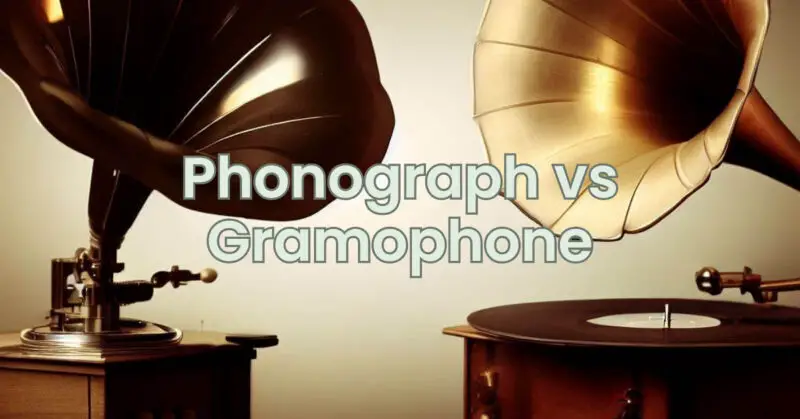In the realm of vintage audio playback devices, the terms “phonograph” and “gramophone” are often used interchangeably, leading to confusion about their true distinctions. These two iconic machines played a pivotal role in the history of recorded sound, but they possess unique characteristics that set them apart. In this article, we explore the differences between phonographs and gramophones, shedding light on their respective designs and functionalities.
Phonograph: The phonograph, invented by Thomas Edison in 1877, was a groundbreaking device that allowed for the recording and playback of sound. It featured a rotating turntable, a tonearm, and a stylus (commonly known as a needle). The stylus would physically touch the grooves on a record, converting the recorded vibrations into sound waves. Early phonographs often employed a large horn or external speaker for sound amplification, relying on mechanical mechanisms to produce the audio.
Gramophone: The gramophone, developed by Emile Berliner in the late 19th century, represented an evolution in audio playback technology. Unlike the phonograph, the gramophone utilized a flat disc record made of various materials such as shellac or vinyl. It employed a different method of playback, utilizing a lateral-cut groove that modulated the stylus horizontally across the record. Gramophones typically had a motor-driven turntable and an internal horn or a sound box that housed the stylus and tonearm. Sound amplification in gramophones relied on internal mechanical components, including springs, gears, and diaphragms.
Key Differences:
- Recording and Playback Methods: Phonographs primarily used cylindrical records, while gramophones employed flat disc records. The phonograph’s vertical-cut groove recorded sound vibrations up and down the cylinder, whereas the gramophone’s lateral-cut groove recorded vibrations side to side across the disc. These differences in recording methods necessitated distinct playback mechanisms.
- Stylus and Tonearm: Phonographs typically featured a rigid, pointed stylus attached to a pivoting tonearm, allowing for precise tracking of the vertical grooves on cylindrical records. Gramophones utilized a softer, often spherical stylus that would ride along the lateral grooves of the disc. The tonearm design in gramophones was often fixed and lacked the same range of motion found in phonographs.
- Sound Amplification: Phonographs relied on external horn speakers or acoustic amplification systems to project sound. The vibrations from the stylus would be transmitted through the tonearm and into the horn, amplifying the sound waves. In contrast, gramophones incorporated internal sound boxes or diaphragms that would mechanically amplify the sound directly within the device. This internal amplification eliminated the need for external horns.
- Time Period and Popularity: Phonographs gained popularity in the late 19th and early 20th centuries, while gramophones emerged as a prominent audio playback device in the late 19th century and continued their popularity into the mid-20th century. Phonographs were primarily associated with Edison’s inventions, whereas gramophones were closely tied to Berliner’s innovations.
While both phonographs and gramophones played a crucial role in the development of audio recording and playback, they differ in terms of recording methods, stylus and tonearm design, sound amplification, and popularity during specific time periods. The phonograph, with its cylindrical records and external horn speakers, captured the early days of audio playback, while the gramophone’s flat disc records and internal sound boxes offered a different approach. Understanding the distinctions between these two iconic devices helps us appreciate their individual contributions to the rich history of recorded sound.

